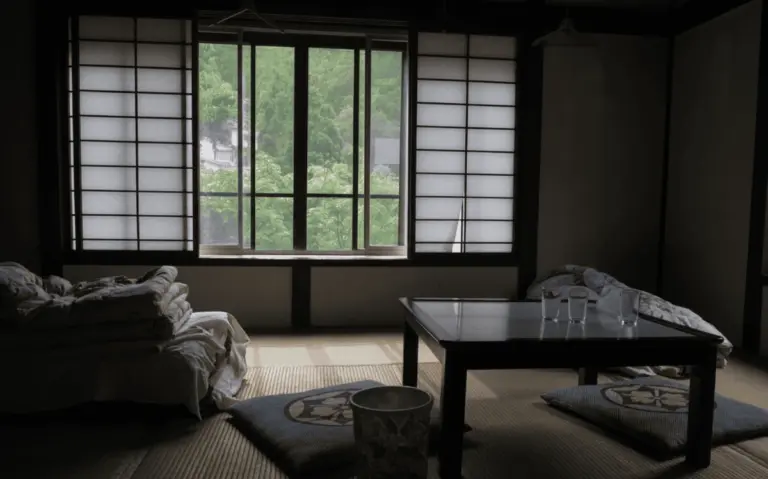What Is a Kakebuton? Japan’s Year-Round Comforter Tradition
The Meaning of Kakebuton: Japan’s Art of Sleeping in Harmony
If you’ve ever heard the word kakebuton and imagined it was just another kind of blanket, you’re missing its quiet brilliance. A kakebuton—Japan’s traditional comforter—is not only about warmth. It’s about rhythm, restraint, and the gentle art of living with the seasons.
In a world that often celebrates plushness and excess, Japan’s bedding culture offers something very different: comfort that breathes, not smothers.
What Is a Kakebuton?
A kakebuton (掛け布団) is the Japanese version of a comforter, typically filled with down or synthetic fiber, and covered in breathable natural fabric such as cotton or linen.
But unlike Western duvets designed for insulation, a kakebuton is designed for balance—to keep you warm while allowing the air around your body to circulate. It’s a comforter that doesn’t trap; it embraces lightly.
Its construction is simple yet deliberate: thin quilting to prevent shifting, lightweight filling for adaptability, and a removable cover that’s washed regularly for freshness. Every detail is designed for ease—nothing more than what’s needed.
Why It Matters Today
The kakebuton is finding new admirers outside Japan, especially among people who value minimalism, natural materials, and mindful design.
In cities like Los Angeles or Copenhagen, design lovers are replacing heavy duvets with Japanese-style bedding because it fits modern values: breathable, low-maintenance, and aesthetically calm.
As climate patterns shift and people seek sustainable lifestyles, the kakebuton feels like a small but meaningful step toward conscious living. You don’t change how you sleep—you change your relationship with comfort.
Layers of Tradition
Japan’s bedding evolved around the idea of harmony with nature. The country’s four distinct seasons made flexibility essential. Instead of one heavy comforter for all months, people layered lighter items: a summer gauze blanket, an autumn-weight kakebuton, and an extra cover in winter.
This layering method is still common in Japan today, especially among households that prefer natural ventilation over central heating.
This approach wasn’t about luxury; it was about sensitivity—responding to air, temperature, and the subtle transitions of the year. It reflects a uniquely Japanese mindset: comfort as a dialogue between human and environment.
Even the morning ritual of airing bedding in the sun—known as hiboshi—is part of this rhythm. Traditionally, Japanese people air their bedding under the sun once or twice a week to remove moisture and restore freshness. You shake the fabric, let the light touch it, and breathe in that faint scent of cotton warmed by daylight. It’s simple, fleeting, and quietly perfect.
Kakebuton vs. Western Duvet
| Feature | Kakebuton (Japan) | Western Duvet |
|---|---|---|
| Philosophy | Harmony with seasons, simplicity | Year-round insulation |
| Thickness | Thin and breathable | Thick and lofty |
| Maintenance | Cover washed often; sun-aired | Insert rarely washed |
| Use | On futon or mattress, sometimes without sheets | On bed, with top sheet |
| Feel | Light, flexible warmth | Dense, cocoon-like warmth |
In Japan, many people skip the top sheet entirely, using only a removable cover with the kakebuton.
The difference isn’t just physical—it’s cultural. The Western duvet promises comfort through more. The Japanese kakebuton achieves it through less.
The Texture of Everyday Life
Sleeping under a kakebuton feels different from the first moment. It’s lighter than you expect, almost weightless at first, and yet warmth gathers slowly, wrapping you in softness that feels personal. You move freely; the air breathes with you.
In that space between skin and fabric, there’s room for silence—something many people didn’t realize was missing until they experienced it. It’s a quiet kind of luxury, the kind that doesn’t demand notice but changes the tone of your entire morning.
Caring for a Kakebuton
Traditionally, Japanese people air their kakebuton in sunlight once or twice a week to remove humidity, refresh the scent, and keep the fill fluffy. Covers are washed weekly and changed seasonally—cotton in summer, flannel in winter.
Unlike Western comforters, which are often sealed in place, the kakebuton is meant to move, breathe, and evolve with daily life. It’s not just maintenance—it’s mindfulness in action.
The Quiet Warmth of Enough
To lie beneath a kakebuton is to feel the essence of Japanese comfort: light, pure, and unhurried. The world outside might chase efficiency and excess, but here—beneath soft cotton and filtered light—you rediscover the beauty of enough.
It’s a comfort that doesn’t ask for more space, more warmth, or more softness. It simply invites you to rest, quietly—the way morning sunlight slips through a paper screen, soft, steady, and calm.


